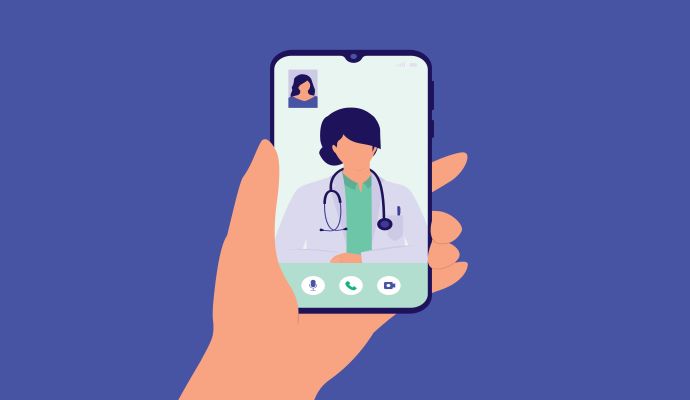Telehealth Yields Higher No-Show Rates for Behavioral Health Patients
New research indicated difficulties behavioral health patients initially face when using telehealth technology, which yields higher no-show rates.

Source: Getty Images
- According to a new study, factors, such as the initiation of relationships, the absence of nonverbal cues, and low familiarity with technology, lead to high telehealth no-show rates for behavioral health patients.
At the beginning of the COVID-19 pandemic, telehealth use skyrocketed. Telehealth services allowed patients and providers to limit exposure to disease and sustain critical patient care.
Amid the uptake of telehealth, behavioral healthcare was common. The FAIR Health Monthly Telehealth Regional Tracker indicated that between November and December 2021, telehealth use rose 11.4 percent at the national level. In the month of December 2021, mental health conditions were the number one diagnosis nationally.
Despite this growth, researchers are curious about the relationship between telehealth and appointment attendance. This is a critical factor to consider because appointment no-shows can delay care and hinder the use of resources.
Thus, researchers conducted a cohort study to compare no-shows between telehealth and in-person care. This study focused on rural behavioral health clinics that provide care for lower-income patients.
The cohort study considered EHR data from outpatient clinics in rural Louisiana between May 1, 2022, and January 31, 2023. Researchers included an experimental group (telehealth users) and a control group (in-person users) in the study.
In total, the study included 9,715 appointments: 3,318 took place in person and 6,397 took place through telehealth. For the control group, the no-show rate was 13 percent. This share was lower than that of the 17 percent among the treated group.
Aside from this, matching indicated that those using telehealth had higher chances of no-shows than those receiving in-person care.
Despite the resourcefulness of telehealth, research indicated that it led patients with behavioral health issues to miss appointments. According to researchers, the reasons may primarily relate to difficulties in establishing relationships through this modality, limited cues and support, and technological challenges.
Furthermore, steps to limit no-shows for this population should include efforts to treat unmet social needs, provide reminders, improve scheduling, and increase incentives.
Prior research efforts have aimed to probe the relationship between telehealth and appointment attendance.
A study presented at an America College of Surgeons (ACS) conference in October 2022 found that telehealth led to a decrease in no-show rates among surgical patients, which improved access to care.
For the study, researchers used data from the University of Alabama Birmingham to compose three groups: a historical control group from in-person visits between January 2018 and March 2020, a contemporary control group from in-person visits between March 2020 and December 2021, and a contemporary group scheduled for telehealth between March 2020 and December 2021.
With an overall no-show rate of 11.3 percent, the in-person cohort no-show rate was 11.7 percent, higher than the 2.5 percent of the telehealth group. Also, a multivariable-adjusted analysis of telehealth indicated that this modality lowered the chances of no-shows by 79 percent.
"Telemedicine is a feasible way for us to reach out to patients who would otherwise have a lot of barriers to access the healthcare system,” said lead study author Connie Shao, MD, a general surgery resident at the University of Alabama Birmingham, in a press release.
These two studies demonstrate how telehealth has inconsistent effects on appointment attendance rates across various populations and settings. To make the most of this type of care, research should Continue exploring the benefits and drawbacks of telehealth modalities.
